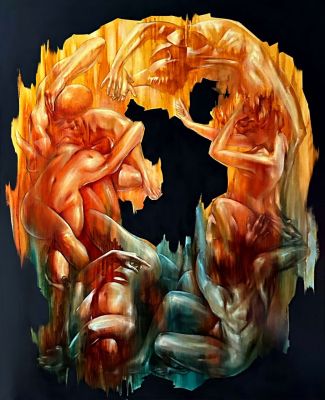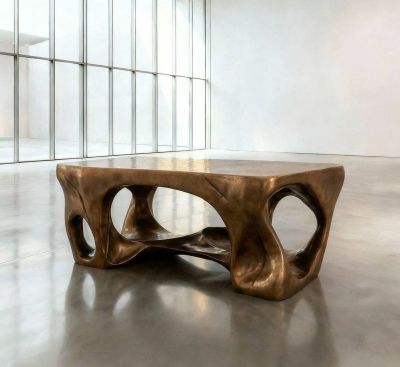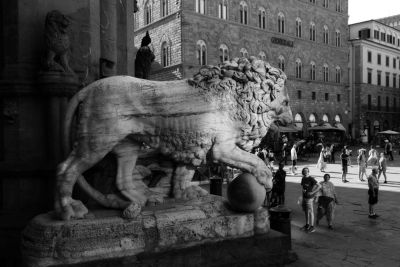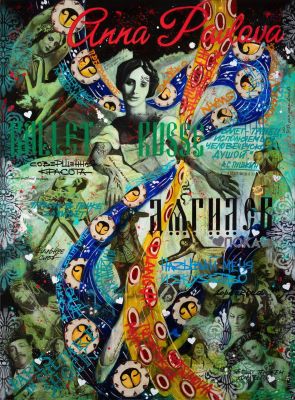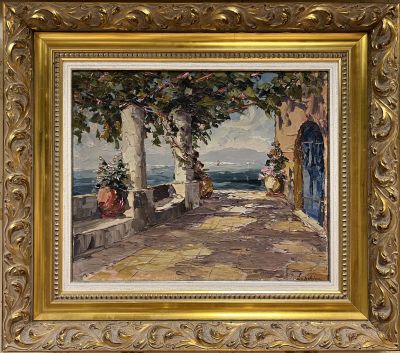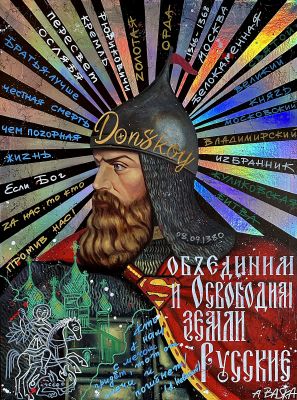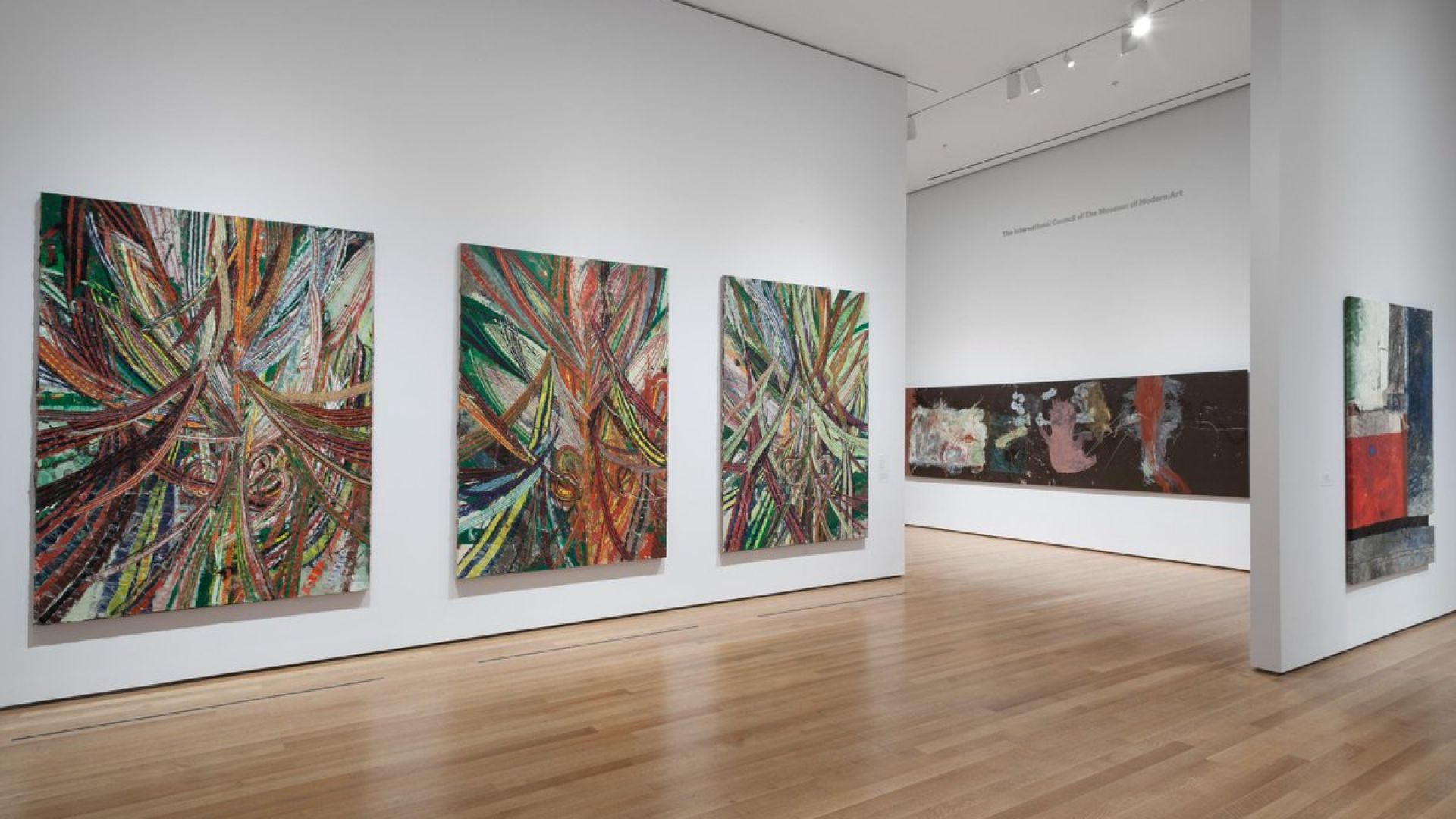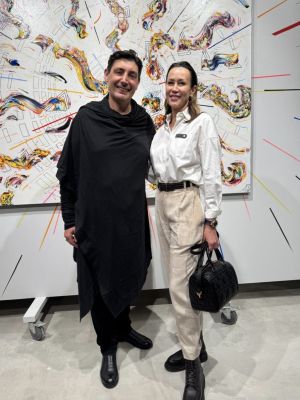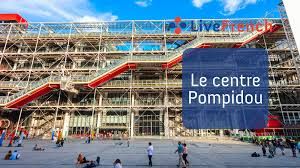Style is understood as a formed complex of visual techniques, expressive means, identifying the artistic originality of the phenomenon of art. The word "style" comes from the Latin. stilus, from Greek. stylos, meaning "pointed writing stick". Styles are not equivalent to each other - some style has existed for centuries, some has been relevant for only a few years. The division of artists' creativity into styles, or directions, is conditional. This happens because it is not possible to clearly define the boundaries of a particular style. The number of styles and their types is a variable value; continuous movement, change, development. There is an almost endless variety of them.
Abstractionism

Abstractionism (from Latin abstractio - removal, distraction) is a direction in painting, characterized by the rejection of the desire to bring the depicted objects as close as possible to the forms of the real objective world. Abstractionism is also called "art under the sign of" zero forms "", "non-objective art", "non-figurative art", "non-objectiveness". Abstractionism as a trend developed in the 10s. XX century, and is an extreme degree of manifestation of modernism. The artists of this trend, when creating works, used only formal elements, such as: lines, color spots, configurations. In the twentieth century in Russia, the most prominent representatives of abstract art are V. Kandinsky, Kazimir Malevich (the author of the very famous painting "Black Square"), as well as the creator of Suprematism and Mikhail Fedorovich Larionov, who was the founder of such a movement as "Rayonism" ( 1910-1912 of the twentieth century).

From the standpoint of Rayonism, the goal of painting is not to depict the objects themselves, but to represent the color rays reflected from them, because this is in the highest measure close to how objects are perceived by the human eye. Worked in Rayonism: Mikhail Le-Dantyu, N.S. Goncharova, S.M., Romanovich.
Avant-garde

Avant-gardism (from the French avant-gardisme, from avant-garde - avant-garde) is a set of art movements that are characterized by an underestimation and a break with the canons and traditions of creativity that existed before, a continuous search for new forms of expression, raising innovation to the rank of the most important values. The term "avant-garde" itself appeared in the 1920s. 20th century and finally established itself in the 50s. In different periods, various trends were attributed to avant-garde (cubism, futurism, expressionism, dadaism, surrealism, etc.)
Academism
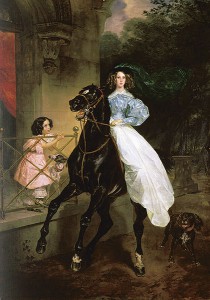
Academism (from French academisme) is a direction in painting, characterized by raising to an ideal and strict adherence to certain canons. This direction was singled out in painting of the 16th-19th centuries, when the norms of any art school were elevated to the rank of a standard, a model for the rest. On the one hand, academicism contributed to bringing art education into the system and strengthening traditions; on the other hand, it grew into an endless system of "prescriptions". Academism understood the art of antiquity and the Italian Renaissance as the basis of the works. For example, when studying at art academies, it was obligatory to complete diploma works on mythological, historical or biblical subjects. The choice of other topics was not allowed, which led to an inevitable gap between the realities of life and art. The protests of artists against following the existing canons gradually led to the fact that the term "academism" acquired a negative coloring.
Actionism
Actionism (from the English. Action art - the art of action) is a direction of art characterized by diverting the attention of the viewer from the work itself to the process of its creation. Happening, performance, event, art of process, art of demonstration and a number of other forms of art are close to actionism. Actionism emerged in the 1960s. 20th century Actionism seeks to blur the line between art and reality, involving the viewer/artist in some kind of action, action.
Empire

Empire (French empire - empire from lat. imperium - command, power) - the essence of this art direction is reflected in the title. It is characterized by the display in the paintings of the power and strength of the army, the greatness of the state; this was achieved by turning to ancient Egyptian decorative forms (war trophies, winged sphinxes), Etruscan vases, Pompeian paintings, Greek and Roman decor, Renaissance frescoes and ornaments. The Empire manifested itself most clearly in architecture. Empire originated in France at the beginning of the 19th century, during the First Empire of Napoleon Bonaparte. Empire - the final development of classicism. Like classicism, Empire strictly follows the canons. But it has a number of features: the Empire style is characterized by the use of bright colors - red, blue, white with gold; the composition of the painting is built (as a rule) on the contrast of plain surfaces of the interior, dishes and minimal ornament, located in a strictly designated place, while in classicism the boundaries of the interior are blurred. Empire style is hard, cold. It is characterized by monumentalism, laconism. The decorative motifs of the Empire style consist mainly of elements of ancient Roman military equipment: legionary signs with eagles, bundles of spears, shields, bunches of arrows, announcer's axes.
Underground

Underground (from the English underground - underground, dungeon) - a direction in art, characterized by opposition to mass culture, existing restrictions and conventions; deliberate violation of accepted norms. The underground originated in the United States in the late 1950s. 20th century In Soviet times, almost any unofficial (not approved by the authorities) art fell under the concept of "underground". The themes most often featured in the works of this style are the "sexual revolution", drugs, problems of marginal groups. After the collapse of the USSR and the removal of bans on freedom of creativity, the underground lost its relevance and essence.
Art Deco

Art deco, also art deco (from French art deco, short for decoratif, lit. "decorative art") - an eclectic style that is a mixture of several trends such as modern, neoclassicism, as well as cubism, futurism and constructivism. Characteristic features: a rich palette of colors, luxury, chic, a lot of ornaments, following the laws, but at the same time using bold geometric shapes, an unusual combination of expensive and exotic materials (ivory, crocodile skin, silver, black ebony, mother-of-pearl, diamonds, pebbled leather, even lizard skins). Fantastic creatures were often depicted, languid, pale women with flowing hair. From the paintings, written in the art deco style, it smells of fatigue, satiety. Art Deco style originated in France in the 1920s. XX century, later spread throughout the world (by the 40s). Art Deco is called the last of the artistic styles, "connecting the unconnected."
Baroque
Baroque is a trend in art characterized by an abundance of decorative details, pomp, grandiosity, contrast (of light, shadow, materials, scale), heaviness, colossality when creating works. The history of the origin of this word deserves special attention, because. it is not completely clear from which word the name of this style was originally formed. The word "baroque" in Portuguese was used by sailors as the name of defective pearls of a bizarre, distorted shape (perola barroca). Later, in the middle of the XVI century. this word was borrowed by the Italians and became synonymous with rude, false, clumsy. The French word "baroquer" among jewelers meant "to soften the contour, to make the form more picturesque"; and in 1718. This word appeared in French dictionaries and was interpreted as a curse. In this connection, this word was long refused to be used as the name of a style in art. The baroque style itself arose around 1600 in Italy and Rome, later spread throughout Europe and became one of the dominant styles in the architecture and art of European countries in the late 16th - mid-18th centuries. The brightest representatives of the Baroque in painting are P. Rubens and M. Caravaggio.
Verism

Verism (from Italian il verismo, from the word vero - true, truthful) is a direction in art, characterized by the desire to most fully convey the veracity, the truth of the events described. The term itself originated in the 17th century and served to designate a realistic trend in baroque painting. Later (in the second half of the 19th century), the term takes on a different meaning, reflecting the desire not for realism, but for naturalism.
Renaissance, or Renaissance

Renaissance, or Renaissance (from French renaissance, Italian Rinascimentom - rebirth) is one of the most important areas of art, characterized by anthropocentrism (interest in a person and his activities), the secular nature of culture, a humanistic worldview, an appeal to the ancient cultural heritage ( i.e. there is a “revival”). It is rather difficult to establish the chronological framework of the Renaissance: in Italy the XIV-XVI centuries, in other countries - the XV-XVI centuries. Artists still turn to traditional religious themes, but at the same time they begin to use new artistic techniques in their canvases: building a three-dimensional composition, using a landscape in the background. This allows you to achieve greater realism of the image, "revives them." The Renaissance is characterized by changes in the culture of society as a whole regarding the orientation and content of art; man and the world around him is affirmed as the highest value. The Renaissance had a strong effect on the entire subsequent development of European art.
Gothic

Gothic (from Italian gotico - unusual, barbaric) - a trend that arose in the middle of the 12th century, is characterized by an organic connection between fine arts and architecture and interior design, complexity and richness of composition, spirituality and sublimity of images. During the Renaissance, this art of the Middle Ages was considered "barbaric". Gothic art was cult in purpose and religious in subject matter. Gothic in its development is divided into Early Gothic, Heyday, Late Gothic. The famous European cathedrals, which tourists love to photograph in great detail, have become masterpieces of the Gothic style. In the design of the interiors of Gothic cathedrals, an important role was assigned to color schemes. An abundance of gilding reigned in the exterior and interior decoration, the luminosity of the interior, the openwork of the walls, and the crystalline dissection of space. The best examples of genuine Gothic stained glass windows are open to the public in the cathedrals of Chartres, Bourges and Paris.
Dadaism, or Dada

Dadaism, or Dada, is a direction in art characterized by the denial of the canons, standards of art, lack of system and disappointment, irrationality. Dada originated in Switzerland as a response of creative personalities to the First World War. Switzerland maintained neutrality, and artists could observe the life of refugees and deserters. The main idea of Dadaism was the consistent destruction of all kinds of aesthetics. The explanation for this is that the Dadaists believed rationality and logic were the cause of wars and conflicts. Protesting against this, in their works they destroyed and abandoned aesthetics, accepted norms. The term "dadaism" comes from the word "dada", which has several meanings: the tail of a sacred cow; mother, children's wooden horse, doubled in (Russian and Romanian); as well as baby talk. In general - something meaningless, which reflected the essence of this style. Collage was a common form of Dadaist art. This style quickly exhausted itself, but had a great influence on the development of art. It is believed that Dadaism was the forerunner of Surrealism.
Decadentism

Decadentism (from French décadence, décadentisme - decline, decline) is a collective name for phenomena in art caused by the crisis of traditional ideas and values. It was widespread in the second half of the 19th - early 20th centuries. Characteristic features: moods of despondency, pessimism, denial of historically established spiritual ideals and values, rejection of everyday reality, fundamental apoliticality, a penchant for irrationalism and mysticism, a vague longing for an unearthly ideal, deliberate obscurity and mystery of images, motives of skepticism and hopelessness, interest in erotica, close attention to the theme of death. The decadents demanded the creation of new forms in art without proposing specific measures and ideas. The philosophical basis was the ideas of A. Schopenhauer, F. Nietzsche, E. Hartmann, M. Nordau.
Impressionism
src="https ://moihobbi.ru/wp-content/uploads/2013/09/350px-Claude_Monet_Impression_soleil_levant-300x233.jpg" style="display: block; margin: auto;">Impressionism (French impressionnisme, from impression - impression) - a direction in art, characterized by the desire to capture the beauty of the real world "as it is", to convey its variability, to reflect one's fleeting impressions. Impressionism originated in France, the period of existence can be noted as the last third of the 19th - early 20th centuries. The term “impressionism” itself was first used by critic L. Leroy, who spoke with disdain about the exhibition of artists in 1874, including C. Monet’s “Impression. Rising Sun. ". The Impressionists in their works sought to convey the freshness of the perception of life, depicted momentary situations, torn from the stream of reality, strong passions.
There are neo-impressionism (French neo-impressionnisme) and post-impressionism (from Latin post-after and impressionism). Neo-impressionism arose in France around 1885, its peculiarity is the use of the latest achievements in the field of optics in art. Post-impressionism is the collective name for trends in painting, the peculiarity is the search for means of expressing not only a specific moment of life, but also understanding the long-term states of the world around.
Classicism

Classicism (derived from Latin classicus - exemplary) is a trend in art characterized by an appeal to the ancient heritage as a model to follow. The greatest value for classicism is eternal and unchanging, individual features fade into the background, the search for essential, typical features becomes dominant. Building works were based on the canons (it was in classicism that the division of genres into “high” and “low” appeared, while their mixing was not allowed) to convey the logic and perfection of the entire universe. The ideology of classicism attaches great importance to the social and educational function of art. Characteristic features of classicism: harmony, order, logic, clarity, plastic clarity of pictorial constructions, reflection of the theme of nature, timeless, appeal to the themes of human life and history. Classicism manifested itself in the works of artists of the 17th century. - early 19th century Over time, classicism was transformed into academism.
Cubism

Cubism (from French cubisme, from cube - cube) is a direction in painting, characterized by the desire to depict objects of reality through geometric shapes - straight lines, faces, cube-like shapes, intersecting planes. Cubism was born in the 1910s. It is noteworthy that the term "Cubists" was originally used by the French critic in relation to the artists as a mockery. The most prominent representatives of cubism are P. Picasso and J. Braque.
Mannerism

Mannerism (from the Italian maniera, manner) is a direction in art characterized by a lack of harmony between the physical and the spiritual, nature and man. Artists attach excessive importance to plasticity, sensuality, and expression. The images in the paintings are either “excessively beautiful”, the objects are elongated, elongated, or vice versa. Mannerism (from Italian manierismo, from maniera - manner, style) is a style in art based on the assimilation of the manner of some great master or a particular art school. Chronological framework of mannerism - XVI century. until the first third of the 17th century. Some researchers consider Mannerism to be the transition from the Renaissance to the Baroque, calling Mannerism an early phase of the Baroque.
Modern, or Art Nouveau
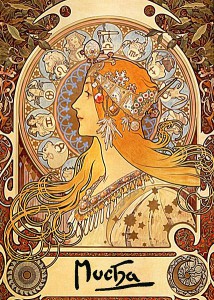
Modern, or Art Nouveau (also Art Nouveau) (from French art nouveau, lit. "new art"). Art Nouveau owes its origin to stained-glass windows - that was the name of the store in Paris where they sold stained-glass windows, which later gained extraordinary popularity. Synonyms for Art Nouveau are Jugendstil (German), Secession (Austrian), Liberty (Italian), Modernisimo (Spanish). These directions are very close to each other, so we note the most pronounced features: the use of sinuous, smooth lines, decorativeness, "naturalness" - an abundance of natural and plant motifs (water lilies, lilies, octopuses, butterflies, dragonflies), mandatory observance of stylistic unity, a combination of various textures and materials. This style originated in the years 1880-1900, was popular in Europe and America, but not for long. This style received a "second wind" in the 50s of the twentieth century.
Naturalism

Naturalism (French naturalisme, from Latin natura - nature) is a trend in art characterized by the desire for an objective depiction of reality, without embellishment and taboo. Representatives of this trend proceeded from the idea of the complete predestination of fate, the dependence of the human spiritual world on the social environment, showed an increased interest in the biological aspects of life, which led to a frank display of the physiological manifestations of a person, his pathologies, scenes of violence and cruelty. Naturalism arose in the last third of the 19th century in Europe and the USA. Naturalism is characterized by a rejection of generalizations, an interest in depicting the "social bottom", the reproduction of reality without its ideological understanding, evaluation and selection.
Pop Art

Pop art (from the English pop art, short for popular art - popular, public art; the second meaning of the word is associated with the onomatopoeic English pop - a jerky blow, clap, slap, i.e. producing a shocking effect) - direction in painting, which spread in the USA and England in the 1950s, characterized by the involvement and transformation of images of mass culture. Pop art artists aim to reflect "life as it is", to reflect reality, and the source of inspiration is the mass of media: advertising, comics, movies, jazz, newspapers and magazines, etc. Pop art necessarily uses the prevailing stereotypes and symbols.
Realism

Realism is a direction characterized by the desire to depict the external and internal essence of phenomena and objects of reality with maximum plausibility, reliability and objectivity. The boundaries of realism are blurred and not clearly defined. Realism in a narrow sense is understood as a direction in the art of the second half of the 19th century. The term "realism" was first used by the French critic J. Chanfleury in the 50s. XIX century to designate art that opposes romanticism and academism. Realism was widespread not only in France, but also far beyond its borders, acquiring its own name in some countries: in Russia - itinerantism, in Italy - Macchiaioli verismo, in Australia - the Heidelberg school (T. Roberts, F. McCubbin), in the USA - trash can school (E. Hopper). Realism is the longest existing direction.
Rococo
 < figcaption style="text-align: center;">F. Boucher Bathing Diana
< figcaption style="text-align: center;">F. Boucher Bathing DianaRococo (from French rococo, from rocaille, rocaille - a decorative motif in the shape of a shell) is an art direction characterized by a hedonistic mood, grace, lightness, intimate flirty character. The Rococo style replaced the Baroque, being its logical continuation and at the same time its opposite. What Baroque and Rococo have in common is the desire for completeness of forms.
Rococo painting is decorative in nature, distinguished by the elegance of color overflows and at the same time a certain “fading” of colors, the loss of the independent meaning of the image of a person in painting, the predominance of such genres as landscapes, pastoral.
The chronological framework of the Rococo - the second half of the 18th century - the 19th century. Having existed for about half a century, rococo gradually gave way to neoclassicism.
Romanticism

Romanticism (from French romantisme) is a trend that replaced classicism. Characterized by the dominant idea of individualism in the image (as opposed to the ideal beauty of the classicists) and the transfer of passions; depicting rare, unusual, and fantastic phenomena. The chronological framework of romanticism is the end of the 18th century. - early 19th century Romanticism is characterized by the aspiration to unlimited freedom and infinity, the expectation of renewal, the glorification of personal and civil independence.
The art of Biedermeier (the work of L. Richter, K. Spitzweg, M. von Schwind, F.G. Waldmuller) became a kind of synthesis of the principles of romanticism and “burgher realism”.
Sentimentalism

Sentimmentalism (from French sentimentalisme, from English sentimental - sensitive, from French sentiment - feeling) - a direction whose characteristic features are the patriarchal idealization of everyday life, the cult of natural feeling, disappointment in a civilization that relies on reason. J.J. Rousseau is considered the ideologist of sentimentalism. The style arose in the 2nd half of the 18th century.
Symbolism

Symbolism (from the French. symbolisme - a sign, an identifying sign) - a direction in painting, characterized by the use of hints, "inconsistencies", mystery, symbols in painting. The word "symbol" in ancient Greece meant a coin divided into two parts, by which people could recognize each other when they met. However, later this word turned into a multifaceted and capacious concept. Symbolism originated in France in the 1870s and 1880s. and reached its greatest development at the turn of the 19th and 20th centuries. The word symbol acts as a sign, a universal image, which has an infinite number of meanings. Symbolism is an attempt by a person to convey spirituality, the abstractness of life, to touch the abyss that goes beyond the visible world.
Suprematism
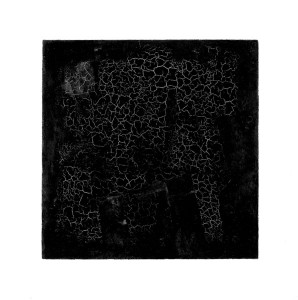
Suprematism (from Latin supremus - the highest) is a trend in the avant-garde art of Russia, founded in the 1st half of the 1910s. K. S. Malevich. It is a kind of abstract art. The name "Suprematism" meant the supremacy, the superiority of color over other properties of painting. Suprematism is characterized by combinations of multi-colored planes of the simplest geometric shapes, devoid of pictorial meaning, a combination of multi-colored and different-sized geometric figures.
Surrealism
Surrealism (from French surrealisme lit. superrealism) is a direction in painting, the source of inspiration for which was the sphere of the subconscious (dreams, hallucinations). Surrealism originated in France in the early 1920s. 20th century Artists used various contradictory and absurd combinations of naturalistic images and allusions, freedom and irrationality were proclaimed the main values. Frequently used themes of the works were magic, erotica, the subconscious and irony. Artists strove to create pictures with photographic accuracy, but at the same time, the image turned out to be illogical, repulsive; or used non-traditional painting techniques to help convey the subconscious. There were cases when surrealists created under the influence of hunger, drugs, hypnosis, anesthesia.
Tachism

Tachisme is a European variety of abstract expressionism. The term was first used in 1950 by the Belgian-French critic M. Sefort to refer to the painting technique of a group of artists whose method of work was impulsive and spontaneous application of paints on canvas and was close to what was called action painting in the USA at the same time ( action painting).
Primitivism

Primitivism is a direction in painting, characterized by a deliberate simplification of pictorial means and imitation of the primitive stages of the development of art - primitive, medieval, folk, art of ancient non-European civilizations, children's creativity. However, the primitivism of form does not entail content mitivism. The term "primitivism" was also used in relation to the so-called "naive" art, i.e. creativity of artists who do not have a specialized education.
Futurism
B. Borovikovsky Lizonka and Dashenka
D.D. Burliuk Lightning Horse
Futurism (from Lat. futurum - future) is a direction in art, characterized by the rejection and destruction of the traditions and stereotypes of culture that existed before, instead praising technology and urbanism as the main signs of the present and future. Futurism proclaimed itself as a prototype of the art of the future.
It was most clearly manifested in the painting and poetry of Italy and Russia, it arose at the beginning of the 20th century. Futurism is characterized by energy compositions with figures fragmented into fragments and sharp corners crossing them. The main idea of futurism was the search for a reflection of the swiftness of movement as the most important sign of the pace of modern life.
In Russia, there was a trend of cubo-futurism (D. Burliuk, O. Rozanova), which was based on combining the plastic principles of French cubism and European general aesthetic principles of futurism.
The rights to the text belong to the rightful author. Link to the original text: https://moihobbi.ru/iskusstvo/risovanie/stili-i- na...

